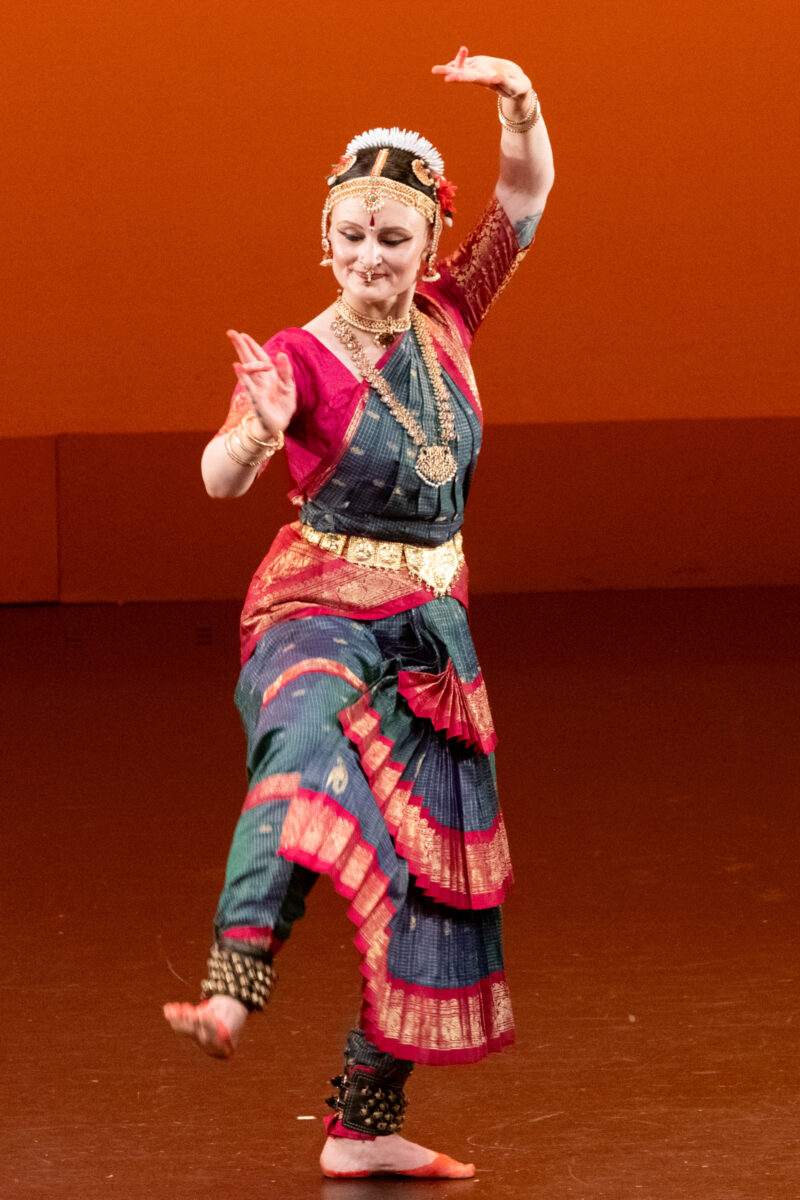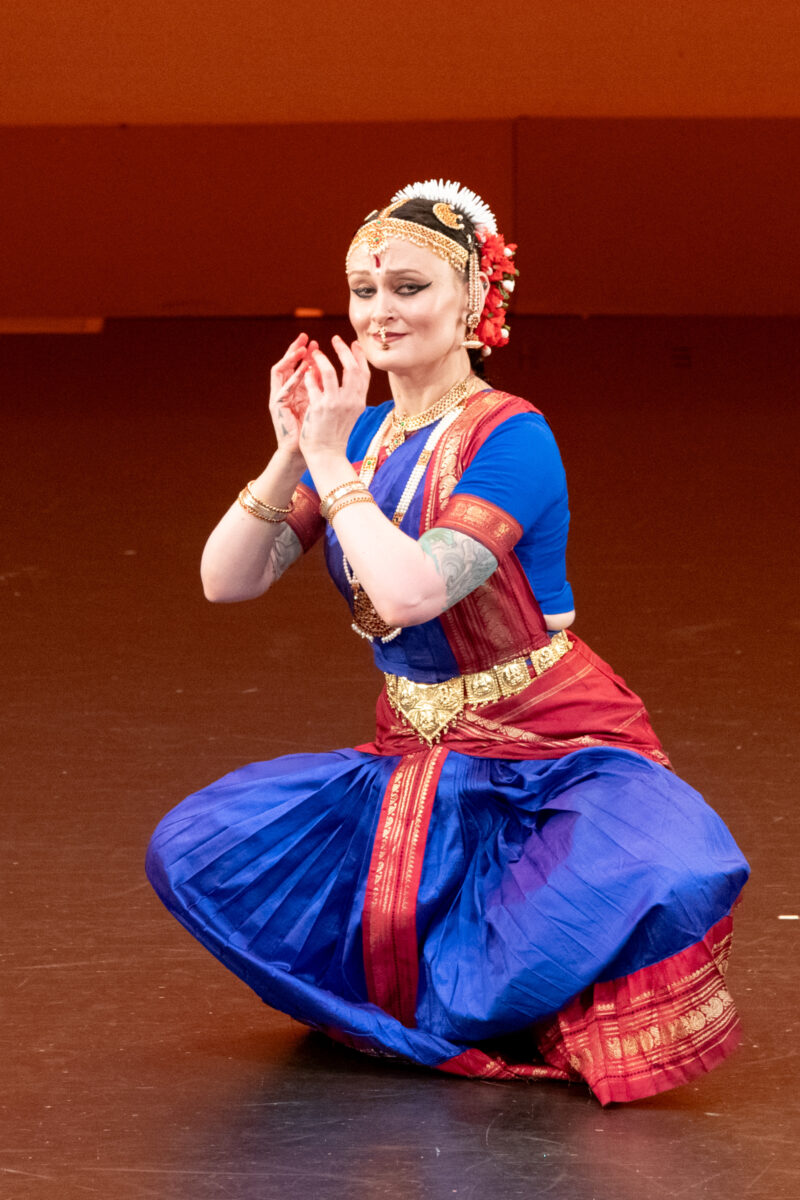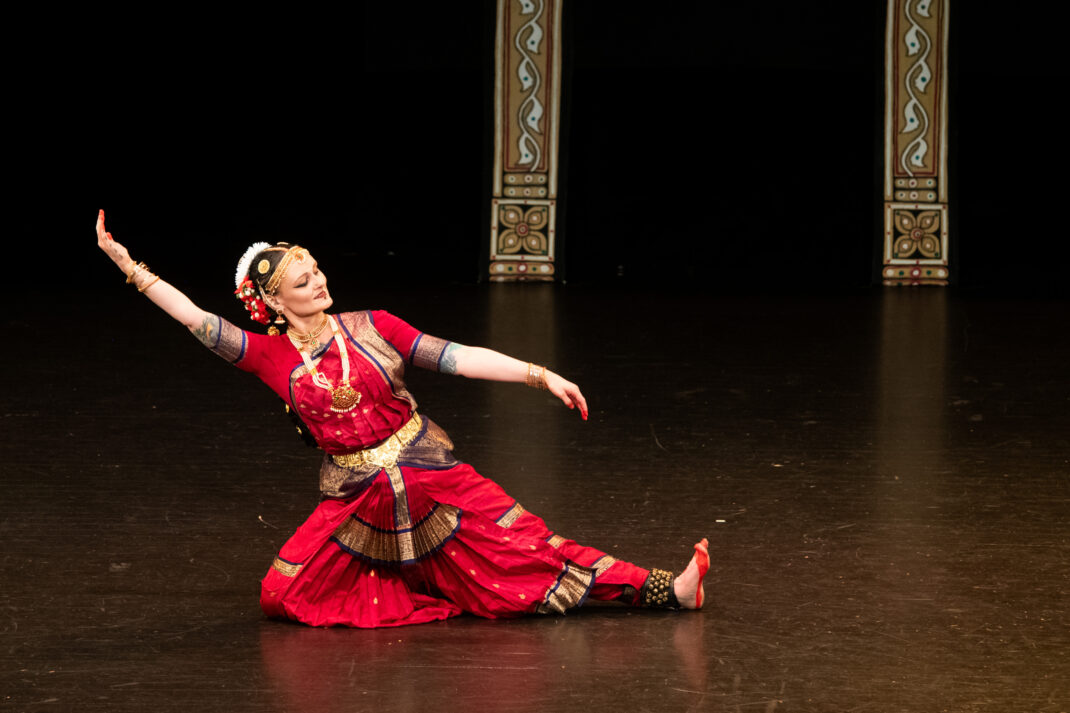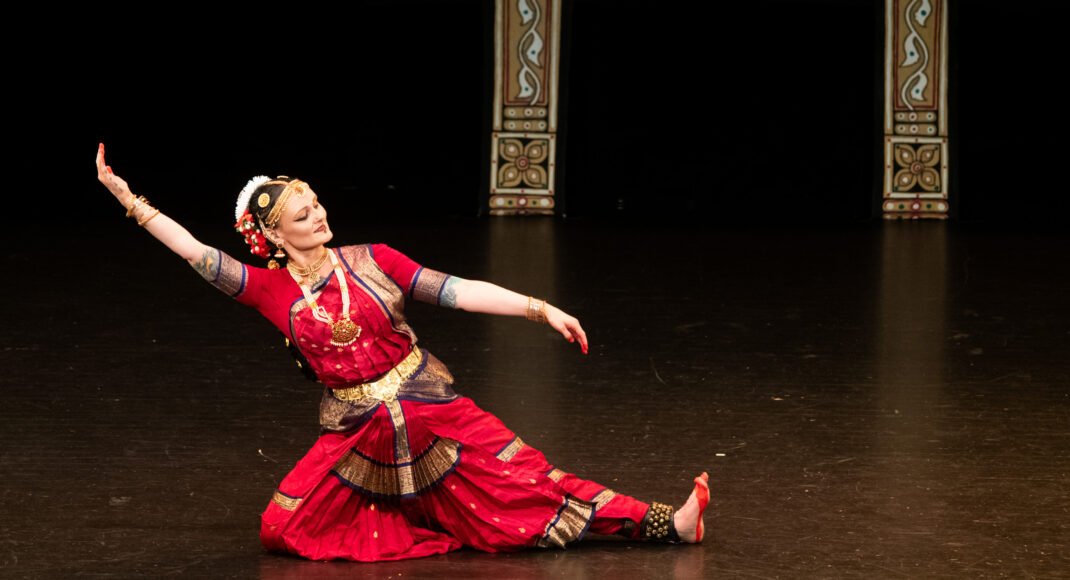14 January 2024. Whirinaki Arts Centre, Upper Hutt, Wellington
reviewed by Jennifer Shennan
An arangetram is a graduation recital in the Bharata Natyam tradition of Indian classical dance. It’s effectively a solo performance lasting close to two hours—a phenomenon in any dance terms, demanding stamina and memory of heroic proportions. To witness a young performer achieve the standard where they can share what they have learned in up to ten years of study and training is not easily matched in any other dance practice that comes to mind.
Vivek Kinra is a renowned teacher in this tradition, and 45 graduates of his Wellington-based Mudra Dance Academy have performed an arangetram over these past three decades, an extraordinary statistic. Typically, the young dancer will be in late teens, perhaps early 20s (though there are exceptions. ‘You perform when I say you are ready,’ says their teacher) so it echoes the achievement of Solo Seal in ballet terms, though in the Indian case this is a fully choreographed and costumed performance in a theatre. The music is recorded in India, the costumes are made there. Detailed and beautifully illustrated printed programs are given out. Tasty Indian refreshments will be provided in the intermission, and upon arrival you have been greeted by a line of smiling hosts who offer a sugar crystal, and a bindi for your forehead. (‘A bindi … symbolizes spirituality, identity, and heritage, and is associated with the activation of the third eye chakra’).
It’s clear we are in for a special experience. The audience is radiantly attired, so whatever you wear you will be outshone, but you don’t waste time wondering what on earth you have done to deserve an invitation to such an auspicious gathering. You just sit down and read your program because there’s a lot of good guidance in it.
I told you there were exceptions, but today’s arangetram takes some beating. Esther McCreadie is the first full-European student to graduate from Mudra. She is of Irish descent and did not begin her study of Indian dance until seeing Vivek perform when in her 20s. She is now aged 46. I suck the little sugar crystal to calm my nerves. I can only imagine how Esther is feeling.
Kinra is a celebrated graduate of the renowned Kalakshetra Academy in Chennai. It is Wellington’s fortune that he has taught here since 1992. The high standards of his own performing, choreography and teaching are well recognised and his pupils are in safe hands.


The first half of the program comprised Mangalam, Alarippu, Shabdam and Ranjani Mala, a varnam. These dance types have contrasting rhythmic demands and dramatic qualities, but in each of them Esther’s technique and sense of line in sculptural poses are secure and give much aesthetic pleasure. We are immediately at ease to see her mudra handwork beautifully articulated, her strong rhythmic security, and the varied range of abhinaya, facial expressions. Creatures galore are evoked—gods and kings, devotees and cupids, gopis and demons, as well as lotus flowers and jewels of adornment.
After the intermission there are keertanam, bhajan, padam and thillana—in celebratory or meditative mood. The padam, Asai Mugam, is particularly poignant as it laments the dancer’s separation from Lord Krishna whose face she can no longer remember, and she struggles to understand what she has done to deserve that punishment. The final scintillating thillana makes a triumphant end to a beautiful and memorable performance.
Various experts pronounce regularly on the benefits of extreme physical exercise for our human body to function at optimum health. Many people count how many steps they walk each day. I think they’d be better to take Bharata Natyam classes since the mind as well as the body is involved to the maximum, and the music is way way better. Namaskar.
Jennifer Shennan, 16 January 2024
All photos: © Gerry Keating
Featured image: A moment from Esther McCreadie’s arangetram, 2024


Thanks so much Jennifer.
An amazing once in a lifetime experience and one I will treasure forever.